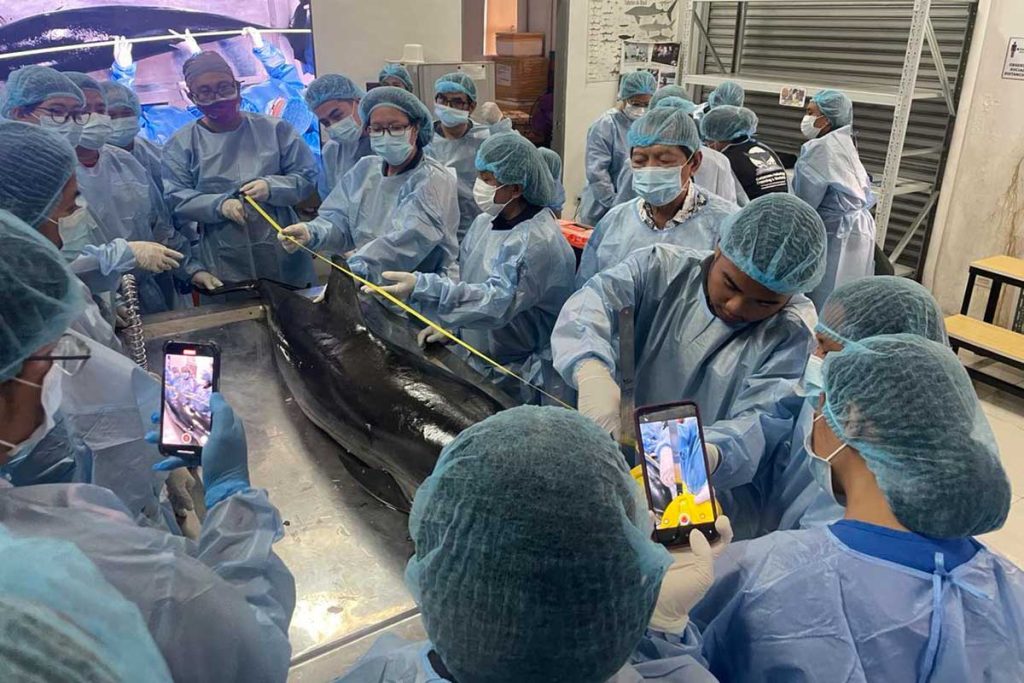Originally Published: Friday, July 5, 2024
By: Eunice Jean C. Patron

Veterinarians measuring the length of a striped dolphin (Stenella coeruleoalba) (Photo credit: Eunice Jean Patron)
Albeit disheartening, scientists said the death of a stranded dolphin is not entirely a setback during the “Cetacean Pathology Training and Workshop: Pathogenesis of Common Diseases in Stranded Dolphins,” held on June 24, 2024, at the University of the Philippines – Diliman College of Science’s Institute of Environmental Science and Meteorology (UPD-CS IESM), Marine Mammal Research and Conservation Laboratory (MMRCL).
The workshop aimed to equip veterinarians with the proper practices and skills for documenting and collecting information about dolphin diseases, ensuring that a dolphin’s death contributes to deepening knowledge about these diseases. It was organized by the MMRCL of IESM, the Microbial Ecology of Terrestrial and Aquatic Systems Laboratory (METAS Lab) of the UPD-CS Institute of Biology (IB), the Philippine Marine Mammal Stranding Network (PMMSN), the Veterinary Practitioners Association of the Philippines (VPAP), and the Philippine Veterinary Medical Association (PVMA).
“We conduct these sorts of training to build the capacity of local government units (LGUs) and concerned agencies in their marine mammal rehabilitation and post-mortem response,” said IESM professor and MMRCL head, Dr. Lemnuel Aragones, who is also the president of PMMSN.



